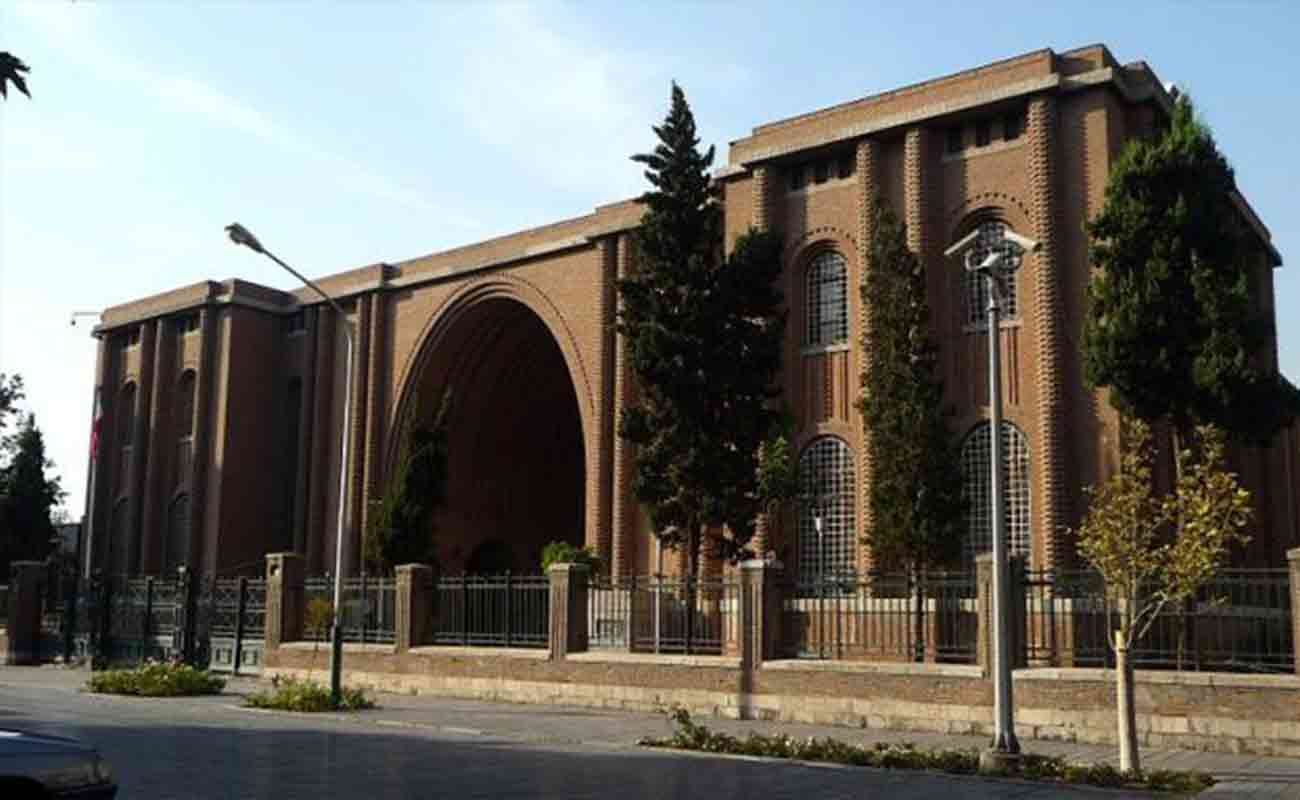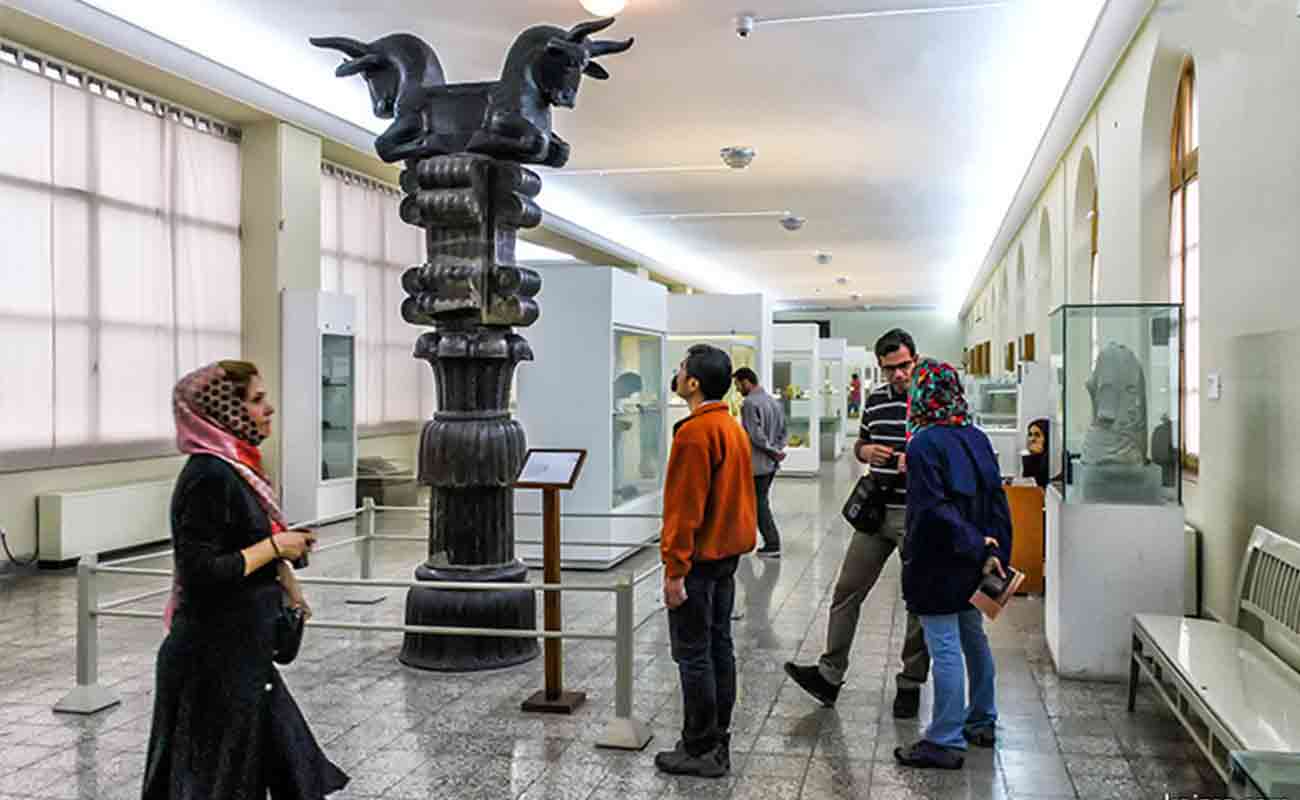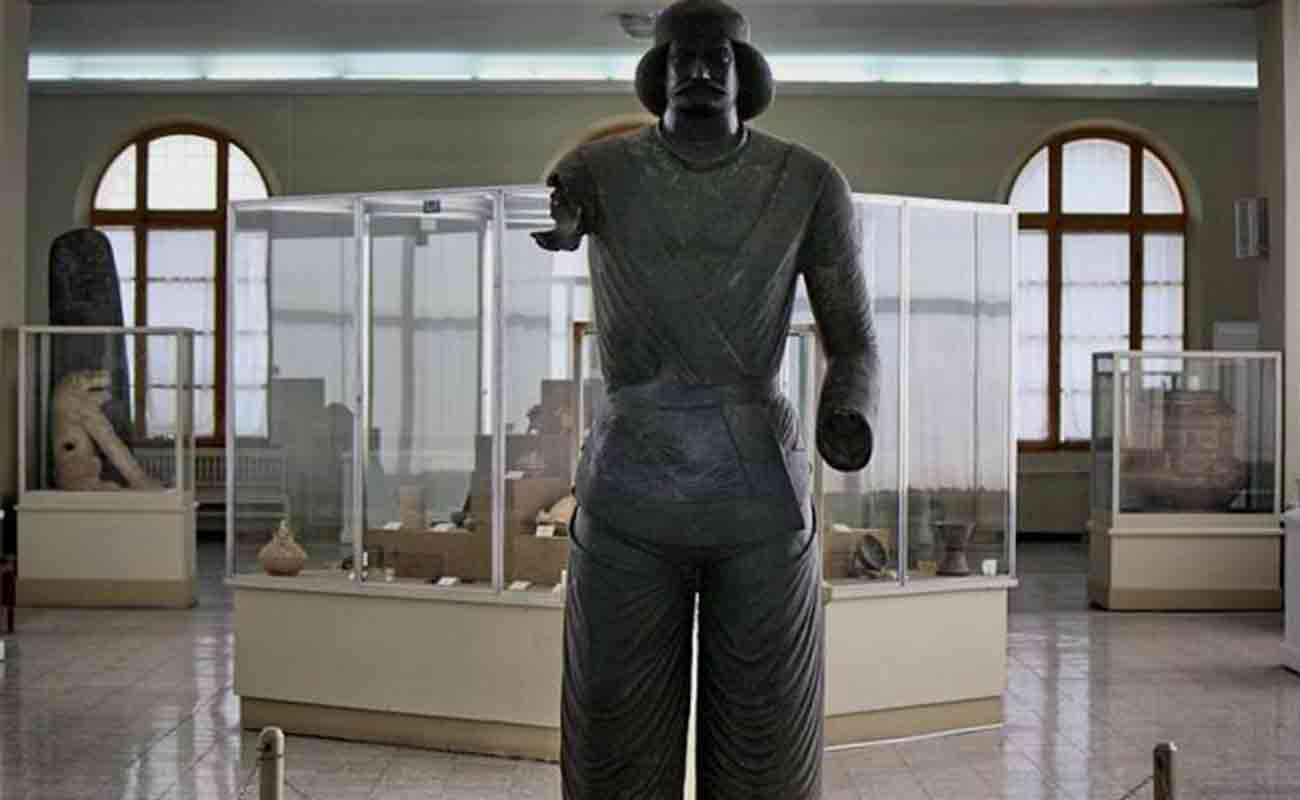Inside is a collection including ceramics, pottery, stone figures and carvings, mostly taken from excavations at Persepolis, Ismail Abad (near Qazvin), Shush, Rey and Turang Tappeh. Unfortunately, the presentation of these treasures is less than inspired and the lack of useful explanations particularly underwhelming (ask for an English ‘brochure’ when buying the ticket, you might get lucky). There is some English labelling, and English-speaking guides are available, though you’ll probably need to wait for one.

Among the finds from Shush, there’s a stone capital of a winged lion, some delightful pitchers and vessels in animal shapes, and colourful glazed bricks decorated with double-winged mythical creatures. A copy of the diarite stele detailing the Babylonian Code of Hammurabi, found at Shush in 1901, is also displayed – the original being in Paris.
Exhibits from Persepolis include a magnificent human-headed capital; a cuneiform inscription proclaiming the might and godly affinity of Xerxes; and a striking frieze of glazed tiles from the central hall of the Apadana Palace. Also on display are a famous trilingual inscription from the time of Darius I; a bull-headed capital and carved staircase; a statue of a sitting dog that looks like it was carved just weeks ago; and four foundation tablets inscribed in cuneiform.

One of the more startling exhibits is the Salt Man from Zanjan. He’s thought to have been a miner who died in the 3rd or 4th century AD, but whose white-bearded head, leg in a leather boot and tools were preserved by the salt in which he was buried. More comical is a bronze statue Parthian prince ‘huShami’ found in Kzestan, whose cheesy moustache looks out from a head obviously made separately from the much larger body. Look also for the impressive selection of Lorestan bronzes, dating back to the 8th century BC.

There’s a small cafe (9am-5pm) in a courtyard behind the museum.
Submit Comment